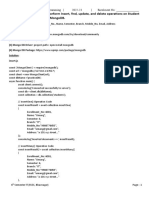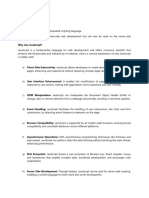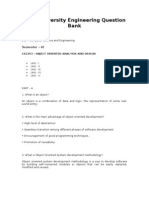0% found this document useful (0 votes)
160 views39 pagesAWP Unit 6 MongoDB NodeJS
This document provides an overview of database programming with Node.js and MongoDB. It begins with basics of MongoDB including data types and how documents are stored in collections. It then covers connecting Node.js to MongoDB and performing CRUD operations on data like insert, find, query, sort, delete, and update using Node.js. The document also includes downloading and installing MongoDB and MongoDB shell on Windows as well as MongoDB shell commands.
Uploaded by
K.B.SCopyright
© © All Rights Reserved
We take content rights seriously. If you suspect this is your content, claim it here.
Available Formats
Download as PDF, TXT or read online on Scribd
0% found this document useful (0 votes)
160 views39 pagesAWP Unit 6 MongoDB NodeJS
This document provides an overview of database programming with Node.js and MongoDB. It begins with basics of MongoDB including data types and how documents are stored in collections. It then covers connecting Node.js to MongoDB and performing CRUD operations on data like insert, find, query, sort, delete, and update using Node.js. The document also includes downloading and installing MongoDB and MongoDB shell on Windows as well as MongoDB shell commands.
Uploaded by
K.B.SCopyright
© © All Rights Reserved
We take content rights seriously. If you suspect this is your content, claim it here.
Available Formats
Download as PDF, TXT or read online on Scribd
/ 39



























































